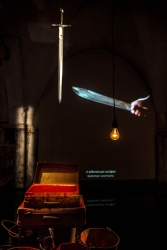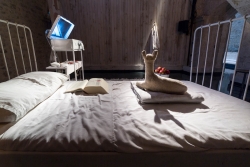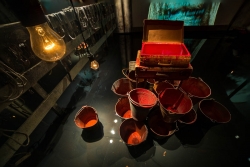H IS FOR HORSE, H IS FOR HOPE BY SASKIA BODDEKE
The natural state of man is of peace and amity – otherwise how has man survived for so long? But we must be vigilant, very vigilant. Nature is neutral but it will not tolerate disaffection. There is a concept for our human purposes we might conveniently call Evil, which is destructive, but Evil can be conquered.
Evil is traditionally represented by the Four Horsemen of the Apocalypse. For human society they traditionally represent the imbalances of disease or pestilence, hunger or famine, violence or war. We struggle to contain and destroy them. We always in the end seek and find peace. Until, that is, the next calamity. Then we have to start all over again. When peace reigns, the four horses of the apocalypse are put away, are stabled, kept quiet and controlled
The four horsemen are kept quiet in a cellar in Spoleto. God should be their controller, but is paralysed by their terror and is hiding cowardly in his private hiding place. The room of the fourth horseman, Death, is occupied by a mild creature representing Hope. Hope is challenging the horsemen in order to find a state of balance.
We can visit the horsemen of the apocalypse in Spoleto and we can consider and contemplate all their many implications, especially for all of us just now – at this historical moment.
This installation will tell in a poetic and metaphorical way about the right for children to be raised in a safe and healthy environment, the right to be educated, the right of the freedom of speech and freedom of Press, the freedom of any religious belief or no religious belief at all as long as it remains peaceful and does no harm. And it hopes to demonstrate universal rights for all.






















